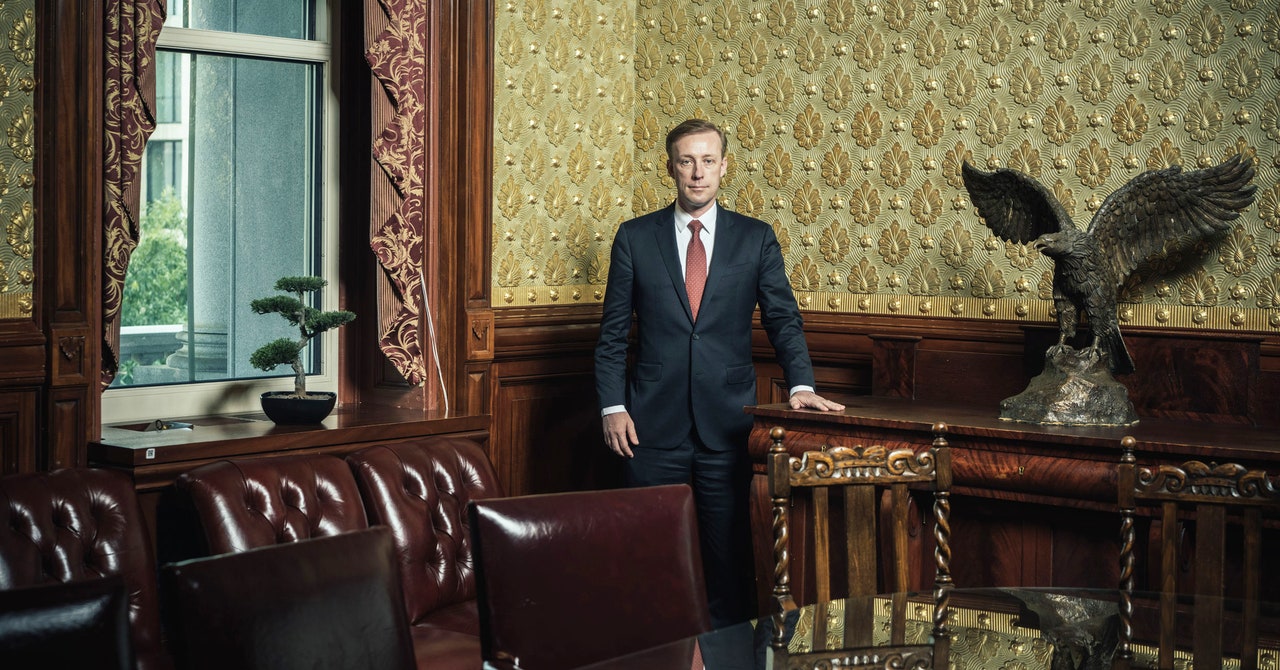The Dutch and the Japanese would go on to unveil their own sweeping controls on semiconductor manufacturing equipment, including ASML’s DUV machines and almost two dozen tools produced in Japan. Both countries have sworn ever since that they were acting in their own—very real—national security interests. (A spokesperson for the Dutch Ministry of Foreign Affairs said much the same thing to WIRED, and Japan’s foreign ministry didn’t respond to requests for comment.) But to anyone paying attention, Sullivan’s influence was obvious.
Just a few days after the Blair House meeting, Sullivan was down the road, sitting inside yet another storied Washington, DC, institution—this time, the US Chamber of Commerce. The building’s intricate interior murals commemorate renowned explorers responsible for breakthroughs in global trade. Now Sullivan was also trying to chart new territory.
Seated just a few feet away from him was Indian national security adviser Ajit Doval. Nicknamed the James Bond of India, Doval is a mustached former spy nearly twice Sullivan’s age, but the two men had struck up an unexpectedly close relationship over the course of the Biden years. This meeting, the kickoff event for a new tech partnership between the US and India, was a product of their bond.
If the first prong of the Biden tech agenda was all about protecting sensitive technologies from reaching China, the second was about promoting the US tech ecosystem just about everywhere else.
The Biden administration saw India as a top prospect. It is the world’s largest democracy, and as China’s next-door neighbor, has actually battled the Chinese military over disputes along the border. What better partner to resist President Xi’s half-concealed threats about an inevitable “reunification” with Taiwan?
At the Chamber of Commerce, senior officials from both countries and top tech executives gathered at long tables configured into a giant square. Together, they brainstormed how to break down the old trade barriers that still stood in the way of closer collaboration. Sullivan encouraged the group to think big, saying he wanted “a list of firsts.”
By the time Indian prime minister Narendra Modi traveled to Washington for a state visit five months later, the White House was ready to roll out that list, including collaborations in Micron semiconductor assembly, GE jet engine production, and even NASA space missions. “On the issues that matter most and that will define the future,” President Biden said in a joint press conference with Modi, “our nations look to one another.”
But this moment of solidarity between two old Cold War adversaries masked a messy tangle of compromises. Even as the US was touting India as a key partner in building the technologies of the future, its government was steadily abusing technologies of today. Under Modi’s leadership, India has amended laws to increase online censorship, led the world in internet shutdowns since 2016, and allegedly used spyware in attempts to hack journalists and dissidents.
There was little evidence that the White House’s overtures to Modi’s government had any moderating effect on these authoritarian tendencies. “If anything, India has continued to move in a direction that’s against US foreign policy interests with respect to tech,” said Jason Pielemeier, a former State Department special adviser and the current executive director of the nonprofit Global Network Initiative, which works on digital rights issues.

